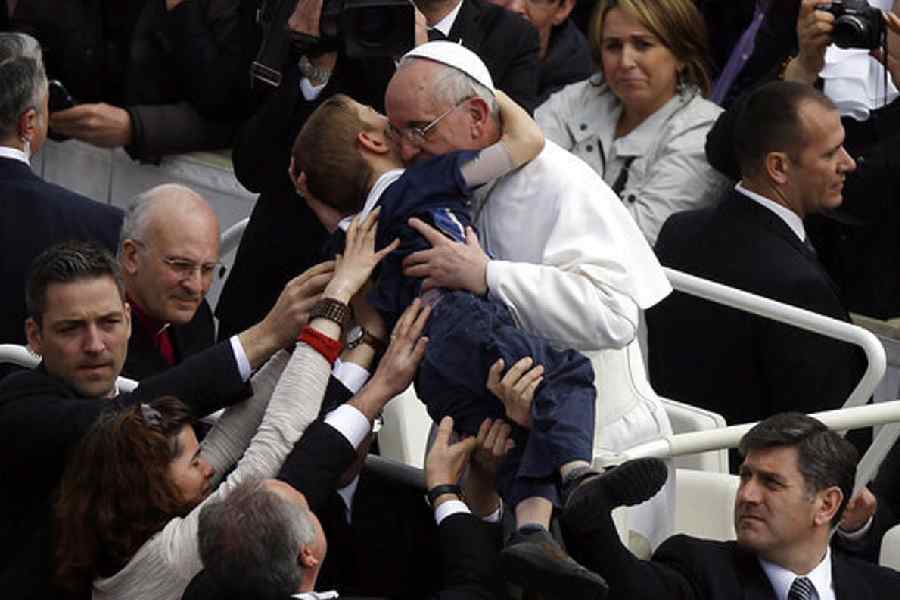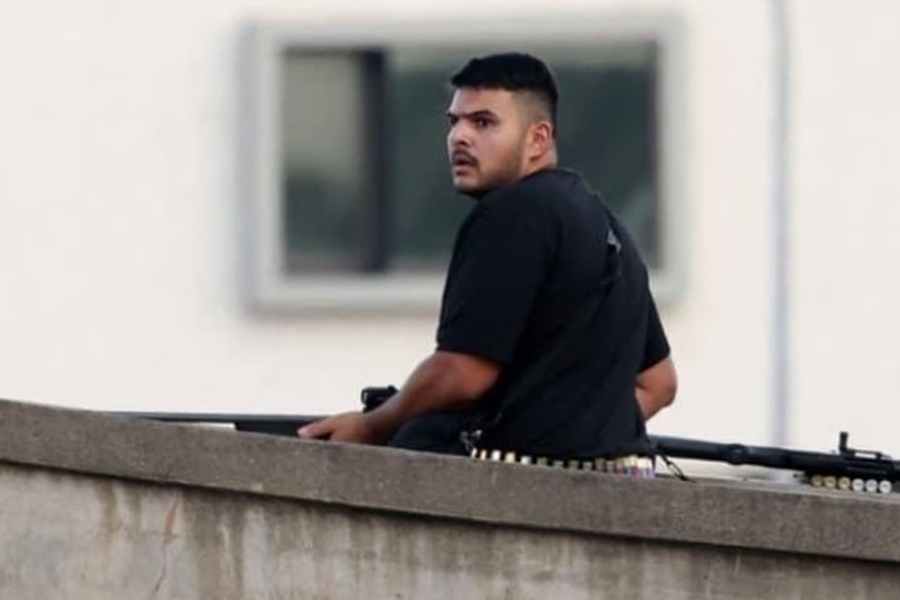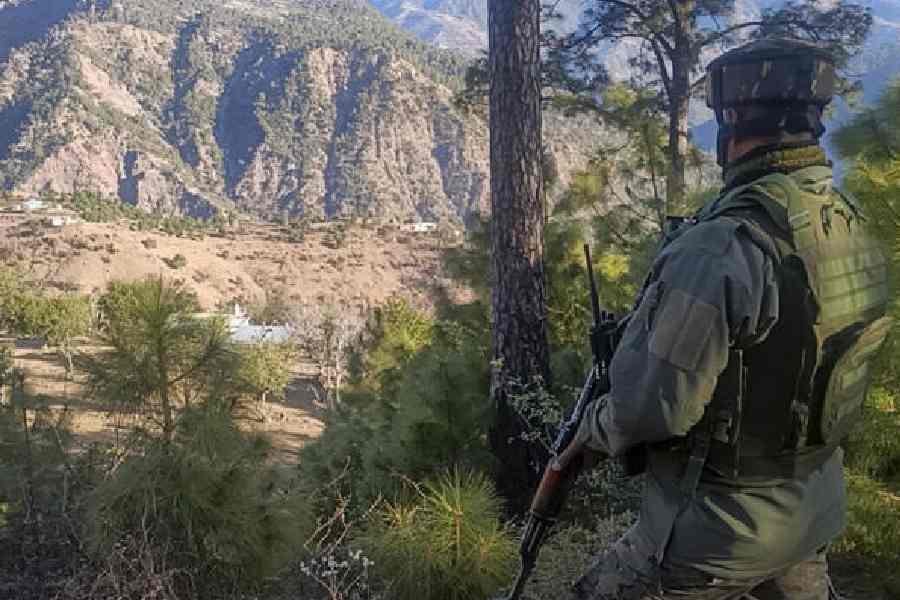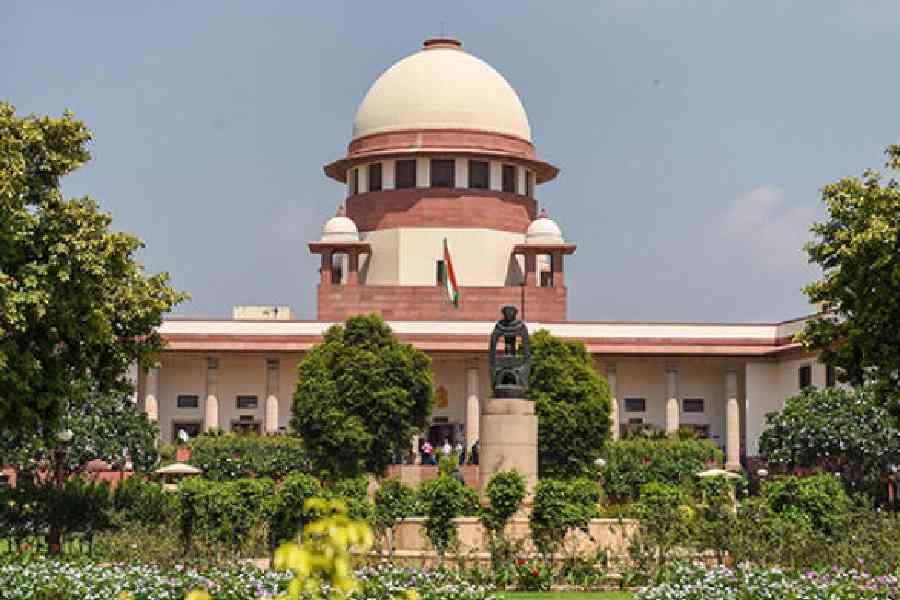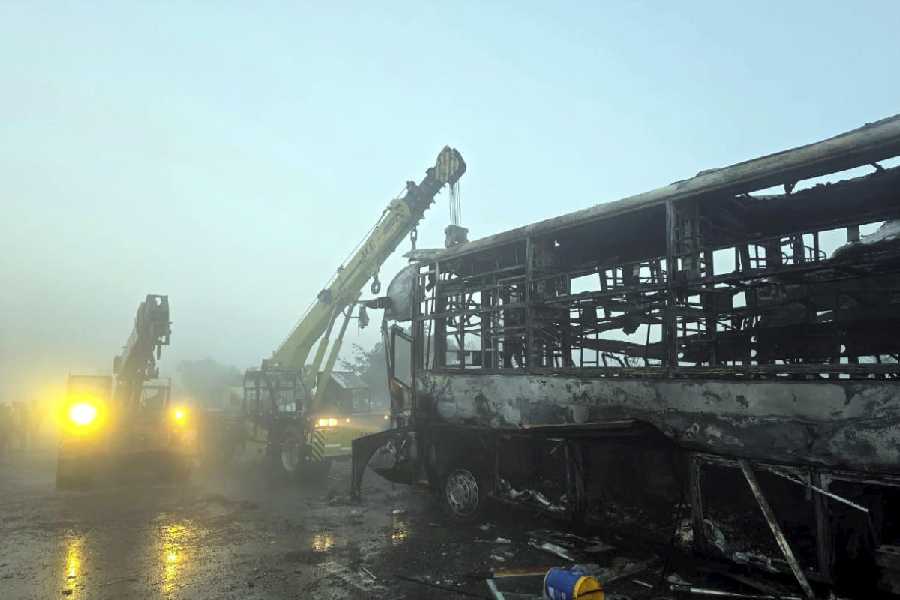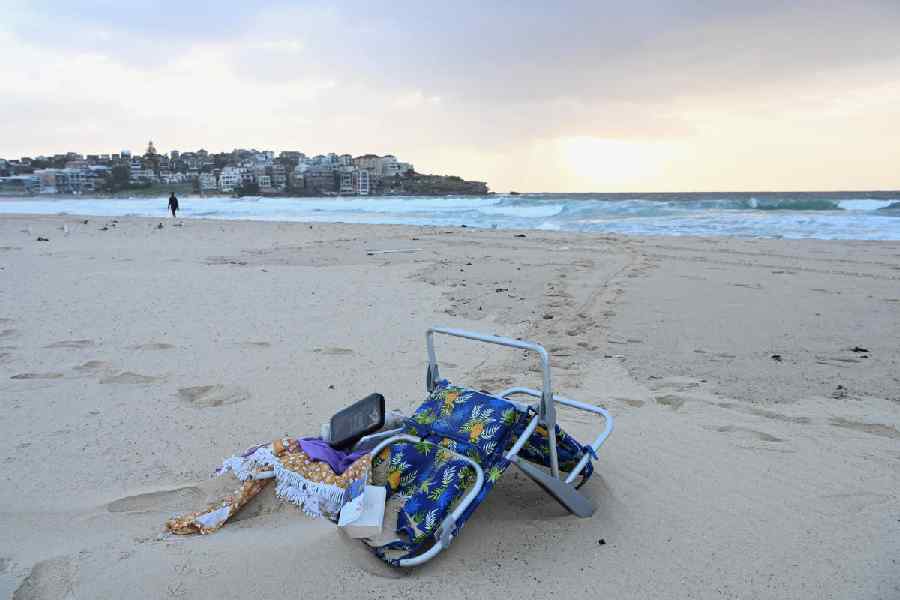Pope Francis, history’s first Latin American pontiff who charmed the world with his humble style and concern for the poor but alienated conservatives with critiques of capitalism and climate change, died on Monday. He was 88.
Bells tolled in church towers across Rome after the announcement, which Cardinal Kevin Farrell read out from the chapel of the Domus Santa Marta, where Francis lived.
“At 7.35 this morning, the Bishop of Rome, Francis, returned to the home of the Father. His entire life was dedicated to the service of the Lord and of his Church,” said Farrell, the Vatican camerlengo, who takes charge after a pontiff’s death.
Francis, who suffered from chronic lung disease and had part of one lung removed as a young man, was admitted to Gemelli hospital on February 14, 2025, for a respiratory crisis that developed into double pneumonia. He spent 38 days there, the longest hospitalisation of his 12-year papacy.
He emerged on Easter Sunday — his last public appearance, a day before his death — to bless thousands of people in St Peter’s Square and treat them to a surprise popemobile romp through the piazza, drawing wild cheers and applause. Beforehand, he met briefly with US Vice-President J.D. Vance.
Francis performed the blessing from the same loggia where he was introduced to the world on March 13, 2013, as the 266th pope.
From his first greeting that night — a remarkably normal “Buonasera” (“Good evening”) — to his embrace of refugees and the downtrodden, Francis signalled a very different tone for the papacy, stressing humility over hubris for a Catholic Church beset by scandal and accusations of indifference.
After that rainy night, the Argentine-born Jorge Mario Bergoglio brought a breath of fresh air into a 2,000-year-old institution that had seen its influence wane during the troubled tenure of Pope Benedict XVI, whose surprise resignation led to Francis’s election.
But Francis soon invited troubles of his own, and conservatives grew increasingly upset with his progressive bent, outreach to LGBTQ+ Catholics and crackdown on traditionalists. His greatest test came in 2018 when he botched a notorious case of clergy sexual abuse in Chile, and the scandal that festered under his predecessors erupted anew on his watch.
And then Francis, the crowd-loving, globe-trotting pope of the peripheries, navigated the unprecedented reality of leading a universal religion through the coronavirus pandemic from a locked-down Vatican City.
He implored the world to use Covid-19 as an opportunity to rethink the economic and political framework that he said had turned rich against poor.
“We have realised that we are on the same boat, all of us fragile and disoriented,” Francis told an empty St Peter’s Square in March 2020. But he also stressed that the pandemic had shown the need for “all of us to row together, each of us in need of comforting the other”.
At the Vatican on Monday, the mood was a mix of sombre quiet among people who knew and worked for Francis, and the typical buzz of tourists visiting St Peter’s Square on the day after Easter. While many initially didn’t know the news, some sensed something was happening given the swarms of television crews.
The Vatican spokesman, Matteo Bruni, meanwhile, wiped tears from his eyes as he met with journalists in the media room.
Francis’s death sets off a weekslong process of allowing the faithful to pay their final respects, first for Vatican officials in the Santa Marta chapel and then in St Peter’s for the general public, followed by a funeral and a conclave to elect a new pope.
Reforming the Vatican
Francis was elected on a mandate to reform the Vatican bureaucracy and finances but went further in shaking up the church without changing its core doctrine. “Who am I to judge?” he replied when asked about a purportedly gay priest.
The comment sent a message of welcome to the LGBTQ+ community and those who felt shunned by a church that had stressed sexual propriety over unconditional love. “Being homosexual is not a crime,” he told the Associated Press in 2023, urging an end to the laws that criminalise it.
Stressing mercy, Francis changed the Church’s position on the death penalty, calling it inadmissible in all circumstances. He also declared that the possession of nuclear weapons, not just their use, was “immoral”.
In other firsts, he approved an agreement with China over bishop nominations that had vexed the Vatican for decades, met the Russian patriarch and charted new relations with the Muslim world by visiting the Arabian Peninsula and Iraq.
He reaffirmed the all-male, celibate priesthood and upheld the Church’s opposition to abortion, equating it to “hiring a hit man to solve a problem”.
Roles for women
But he added women to important decision-making roles and allowed them to serve as lectors and acolytes in parishes. He let women vote alongside bishops in periodic Vatican meetings, following longstanding complaints that women do much of the church’s work but are barred from power.
Sister Nathalie Becquart, whom Francis named to one of the highest Vatican jobs, said his legacy was a vision of a Church where men and women existed in a relationship of reciprocity and respect.
“It was about shifting a pattern of domination — from human being to the creation, from men to women — to a pattern of cooperation,” said Becquart, the first woman to hold a voting position in a Vatican synod.
Still, a note of criticism came from the Women’s Ordination Conference, which had been frustrated by Francis’s unwillingness to push for the ordination of women.
“His repeated ‘closed door’ policy on women’s ordination was painfully incongruous with his otherwise pastoral nature, and for many, a betrayal of the synodal, listening Church he championed. This made him a complicated, frustrating, and sometimes heartbreaking figure for many women,” the statement said.
Church as refuge
While Francis did not allow women to be ordained, the voting reform was part of a revolutionary change in emphasising what the Church should be: a refuge for everyone — “todos, todos, todos (everyone, everyone, everyone)” — not for the privileged few. Migrants, the poor, prisoners and outcasts were invited to his table far more than Presidents or powerful CEOs.
“For Pope Francis, (the goal) was always to extend the arms of the Church to embrace all people, not to exclude anyone,” said Farrell,
the camerlengo.
Francis demanded his bishops apply mercy and charity to their flocks, pressed the world to protect God’s creation from climate disaster, and challenged countries to welcome those fleeing war, poverty and oppression.
After visiting Mexico in 2016, Francis said of the then US presidential candidate Donald Trump that anyone building a wall to keep migrants out “is not Christian”.
While progressives were thrilled with Francis’s radical focus on Jesus’s message of mercy and inclusion, it troubled conservatives who feared he was watering down Catholic teaching and threatening the very Christian identity of the West. Some even called him a heretic.
A few cardinals openly challenged him. Francis usually responded with his typical answer to conflict: silence.
He made it easier for married Catholics to get an annulment, allowed priests to absolve women who had had abortions and decreed that priests could bless same-sex couples. He opened debate on issues like homosexuality and divorce, giving pastors wiggle room to discern how to accompany their flocks rather than hand them strict
rules to apply.
St Francis of Assisi
Francis lived in the Vatican hotel instead of the Apostolic Palace, wore his old orthotic shoes and not the red loafers of the papacy, and rode in compact cars. It wasn’t a gimmick.
“I see clearly that the thing the Church needs most today is the ability to heal wounds and to warm the hearts of the faithful,” Francis told a Jesuit journal in 2013. “I see the Church as a field hospital after battle.”
As if becoming the first Latin American and first Jesuit Pope wasn’t enough, Francis was also the first to name himself after St Francis of Assisi, the 13th-century friar known for personal simplicity, a message of peace, and care for nature and society’s outcasts.
Francis sought out the unemployed, the sick, the disabled and the homeless. He formally apologised to indigenous peoples for the crimes of the Church from colonial times onward.
And he himself suffered: He had part of his colon removed in 2021, then needed more surgery in 2023 to repair a painful hernia and remove intestinal scar tissue. Starting in 2022, he regularly used a wheelchair or cane because of bad knees, and endured bouts of bronchitis.
He went to society’s fringes to minister with mercy: caressing the deformed head of a man in St Peter’s Square, kissing the tattoo of a Holocaust survivor, or inviting Argentina’s garbage scavengers to join him onstage in Rio de Janeiro.
“We have always been marginalised, but Pope Francis always helped us,” said Coqui Vargas, a transgender woman whose Roman community forged a unique relationship with Francis during the pandemic.
His first trip as pope was to the island of Lampedusa, then the epicentre of Europe’s migration crisis.
He consistently chose to visit poor countries where Christians were often persecuted minorities, rather than the centres of global Catholicism.
Friend and fellow Argentine, Bishop Marcelo Sánchez Sorondo, said Francis’s concern for the poor and disenfranchised was based on the Beatitudes — the eight blessings Jesus delivered in the Sermon on the Mount for the meek, the merciful, the poor in spirit and others.
“Why are the Beatitudes the programme of this pontificate? Because they were the basis of Jesus Christ’s own programme,” Sánchez said.
Missteps on abuse
But more than a year passed before Francis met with survivors of priestly sexual abuse, and victims’ groups initially questioned whether he really understood the scope of the problem.
Francis did create a sex abuse commission to advise the Church on best practices, but it lost influence after a few years and its recommendation of a tribunal to judge bishops who covered up for predator priests went nowhere.
And then came the greatest crisis of his papacy, when he discredited Chilean abuse victims in 2018 and stood by a controversial bishop linked to their abuser.
Realising his error, Francis invited the victims to the Vatican for a personal mea culpa and summoned the leadership of the Chilean Church to resign en masse.
As that crisis concluded, a new one erupted over ex-Cardinal Theodore McCarrick, the retired Archbishop of Washington and a counsellor to three Popes.
Francis had moved swiftly to sideline McCarrick amid an accusation he had molested a teenage altar boy in the 1970s. But Francis nevertheless was accused by the Vatican’s one-time US ambassador of having rehabilitated McCarrick early in his papacy.
Francis eventually defrocked McCarrick after a Vatican investigation determined he sexually abused adults as well as minors. Francis changed Church law to remove the pontifical secret surrounding abuse cases and enacted procedures to investigate bishops who abused or covered for their paedophile priests, seeking to end impunity for the hierarchy.
“He sincerely wanted to do something and he transmitted that,” said Juan Carlos Cruz, a Chilean abuse survivor Francis discredited who later developed a close friendship with the pontiff.
Change from Benedict
The road to Francis’s 2013 election was paved by Pope Benedict XVI’s decision to resign and retire — the first in 600 years — and it created the unprecedented reality of two Popes living in the Vatican.
Francis didn’t shy sway from Benedict’s potentially uncomfortable shadow. He embraced him as an elder statesman and adviser, coaxing him out of his cloistered retirement to participate in the public life of the Church.
“It’s like having your grandfather in the house, a wise grandfather,” Francis said.
Francis praised Benedict by saying he had “opened the door” to others following suit, fuelling speculation that Francis also might retire. But after Benedict’s death on December 31, 2022, Francis asserted that in principle the papacy is a job for life.
Francis’s looser liturgical style and pastoral priorities made it clear that he and the German-born theologian came from very different religious traditions, and
Francis directly overturned several decisions of his predecessor.
He made sure Salvadoran Archbishop Óscar Romero, a hero to the liberation theology movement in Latin America, was canonised after his case languished under Benedict over concerns about the credo’s Marxist bent.
Francis reimposed restrictions on celebrating the old Latin Mass that Benedict had relaxed, arguing the spread of the Tridentine Rite was divisive.
The move riled Francis’s traditionalist critics and opened sustained conflict between Rightwing Catholics, particularly in the US, and the Argentine pope.
Conservatives oppose
By then, conservatives had already turned away from Francis, betrayed after he opened debate on allowing remarried Catholics to receive the sacraments even if they didn’t get an annulment — a Church ruling that their first marriage was invalid. “We don’t like this Pope,” headlined Italy’s conservative daily Il Foglio a few months into the papacy, reflecting the unease of the small but vocal traditionalist Catholic movement.
Those same critics amplified their complaints after Francis approved Church blessings for same-sex couples, and a controversial accord with China over nominating bishops. Its details were never released, but conservative critics bashed it as a sellout to China, while the Vatican defended it as the best deal it could get with Beijing.
US Cardinal Raymond Burke, a figurehead in the anti-Francis opposition, said the church had become “like a ship without a rudder”.
Burke waged his opposition campaign for years, starting when Francis fired him as the Vatican’s supreme court justice and culminating with his vocal opposition to Francis’s 2023 synod on the Church’s future.
Twice, he joined other conservative cardinals in formally asking Francis to explain himself on doctrine issues reflecting a more progressive bent.
AP

